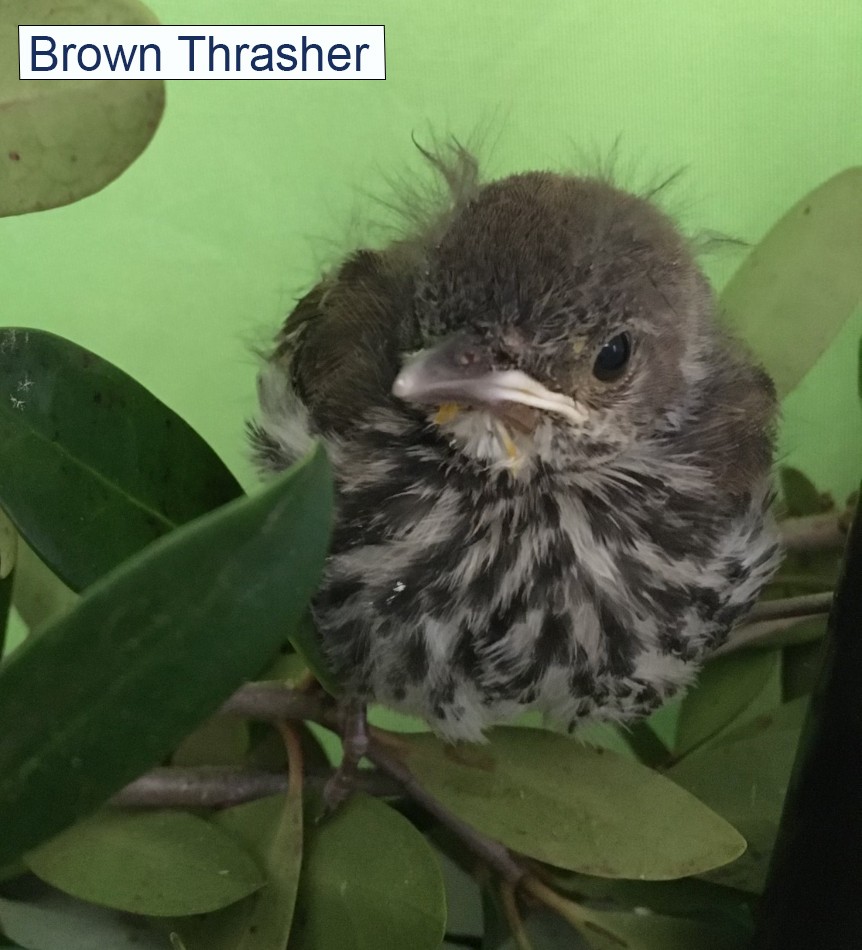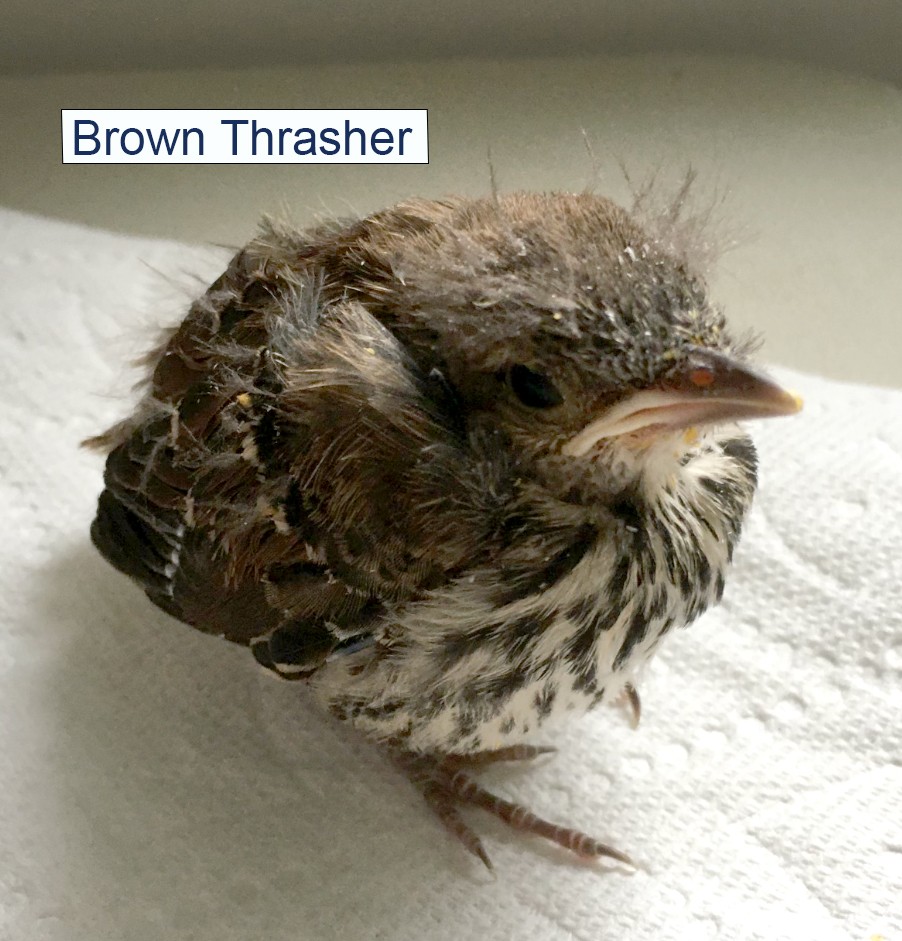Brown Thrasher, Toxostoma rufum
While not quite as good a mimic as the Northern Mockingbird, the Brown Thrasher sings a remarkably varied array of phrases that it usually repeats 2 or 3 times.
The male will sing from a high exposed perch starting in March, and as the breeding season progresses, the song rate decreases until the male virtually stops singing by July. The Brown Thrasher breeds across the eastern United States and southern Canada, and it spends the winter in the southeastern states. It is a year-round resident in Tennessee.
Description: This large, long-tailed songbird is bright reddish-brown above with buffy-white underparts that are streaked with black. It has a long slightly down-curved black bill and 2 whitish wing bars. The sexes look alike.
Length: 11.5"
Wingspan: 13"
Weight: 2.4 oz
Voice: The song is a series of musical phrases, usually repeated two and sometimes three times. The call is a bold smack. Brown Thrashers seldom mimic other birds. The male often sings from a high exposed perch.
Similar Species:
- Wood Thrushes are similar in color but have round spots on the breast, not streaks, a shorter tail, and no wing bars.
Habitat: Found in a variety of shrubby habitats including hedgerows, shrubby thickets, open cedar forests, roadsides, and woodland edges. Often close to human habitation.
Diet: Mainly insects (especially beetles) during the breeding season and fruits and nuts in fall and winter.
Nesting and reproduction: Brown Thrashers often raise 2 broods in Tennessee. Young fledge relatively quickly for a passerine of this size, sometimes leaving the nest fully feathered in 9 days. This is likely an adaptation to reduce nest predation, which is common in shrub-nesting species.
Clutch Size: 4 to 5 eggs with a range of 2 to 6.
Incubation: Both sexes incubate the eggs for 11 to 14 days.
Fledging: Both parents feed the young, which fledge in 9 to 13 days.
Nest: Both adults build the bulky cup-nest of twigs and leaves and line it with rootlets. Nests are placed in thick shrubbery, vines, a small tree, or occasionally on the ground. Nest heights average 5 feet above the ground in Tennessee and range from on the ground (rare) to 12 feet.
Status in Tennessee: This statewide resident is fairly common in summer and uncommon in winter. Numbers have been declining in Tennessee since the 1960s possibly due to maturing forests and the habit of "cleaning" fencerows in agricultural areas.
Fun Facts:
- An aggressive defender of its nest, the Brown Thrasher has been known to (although rarely) strike people and dogs hard enough to draw blood.
- Brown Thrashers have long, heavy legs characteristic of a ground foraging bird. They spend considerable time using their long, slightly curved bill to sweep the leaf litter uncovering insects, fallen seeds, and berries.
- The oldest known Brown Thrasher in the wild was 11 years 11 months old.
Obsolete English Names: brown thrush
Best places to see in Tennessee: While Brown Thrashers are found across the state, they are most conspicuous when singing from exposed perches in early spring.


